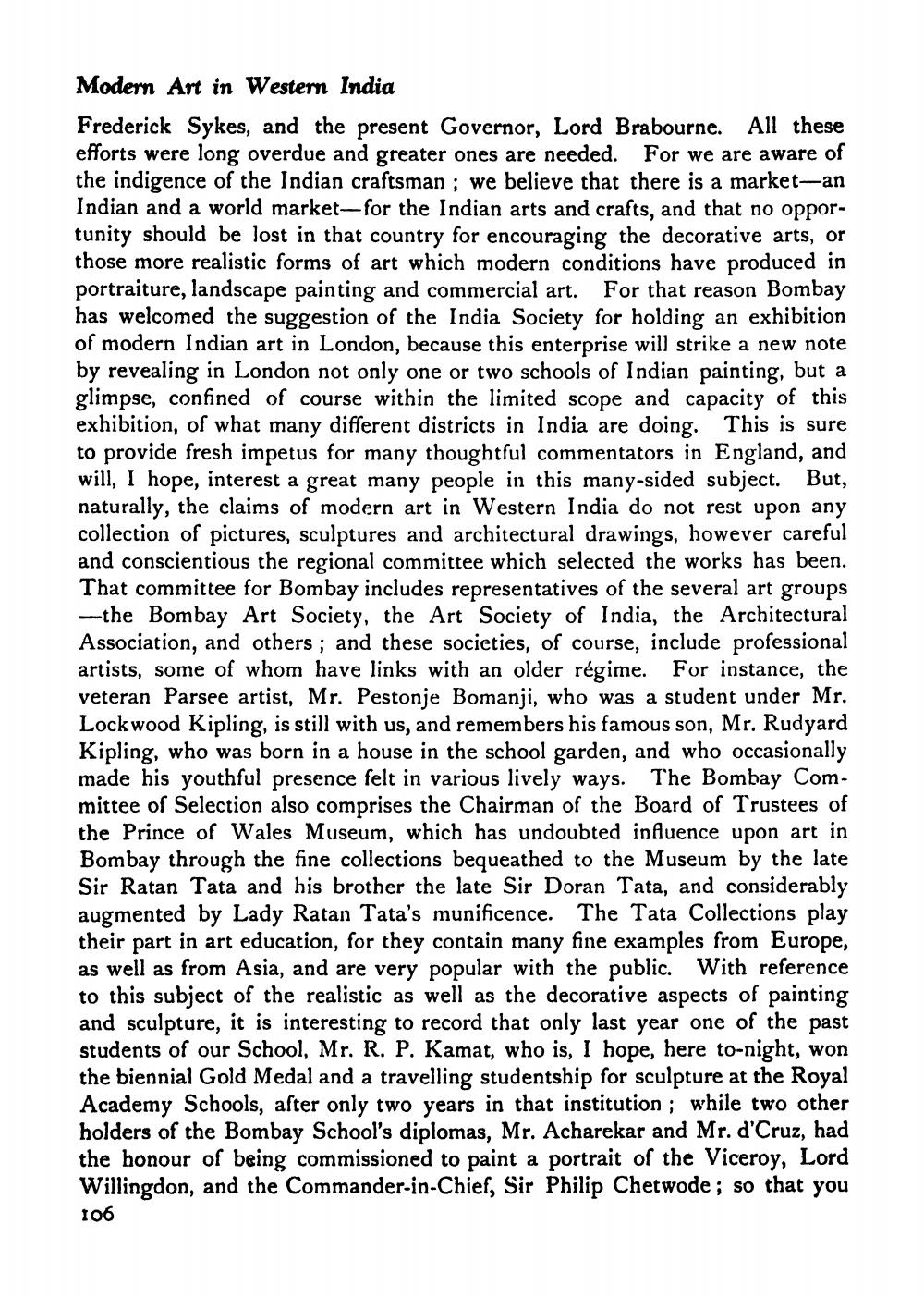________________
Modern Art in Western India
Frederick Sykes, and the present Governor, Lord Brabourne. All these efforts were long overdue and greater ones are needed. For we are aware of the indigence of the Indian craftsman; we believe that there is a market-an Indian and a world market for the Indian arts and crafts, and that no opportunity should be lost in that country for encouraging the decorative arts, or those more realistic forms of art which modern conditions have produced in portraiture, landscape painting and commercial art. For that reason Bombay has welcomed the suggestion of the India Society for holding an exhibition of modern Indian art in London, because this enterprise will strike a new note by revealing in London not only one or two schools of Indian painting, but a glimpse, confined of course within the limited scope and capacity of this exhibition, of what many different districts in India are doing. This is sure to provide fresh impetus for many thoughtful commentators in England, and will, I hope, interest a great many people in this many-sided subject. But, naturally, the claims of modern art in Western India do not rest upon any collection of pictures, sculptures and architectural drawings, however careful and conscientious the regional committee which selected the works has been. That committee for Bombay includes representatives of the several art groups --the Bombay Art Society, the Art Society of India, the Architectural Association, and others; and these societies, of course, include professional artists, some of whom have links with an older régime. For instance, the veteran Parsee artist, Mr. Pestonje Bomanji, who was a student under Mr. Lockwood Kipling, is still with us, and remembers his famous son, Mr. Rudyard Kipling, who was born in a house in the school garden, and who occasionally made his youthful presence felt in various lively ways. The Bombay Committee of Selection also comprises the Chairman of the Board of Trustees of the Prince of Wales Museum, which has undoubted influence upon art in Bombay through the fine collections bequeathed to the Museum by the late Sir Ratan Tata and his brother the late Sir Doran Tata, and considerably augmented by Lady Ratan Tata's munificence. The Tata Collections play their part in art education, for they contain many fine examples from Europe, as well as from Asia, and are very popular with the public. With reference to this subject of the realistic as well as the decorative aspects of painting and sculpture, it is interesting to record that only last year one of the past students of our School, Mr. R. P. Kamat, who is, I hope, here to-night, won the biennial Gold Medal and a travelling studentship for sculpture at the Royal Academy Schools, after only two years in that institution ; while two other holders of the Bombay School's diplomas, Mr. Acharekar and Mr. d'Cruz, had the honour of being commissioned to paint a portrait of the Viceroy, Lord Willingdon, and the Commander-in-Chief, Sir Philip Chetwode; so that you 106




